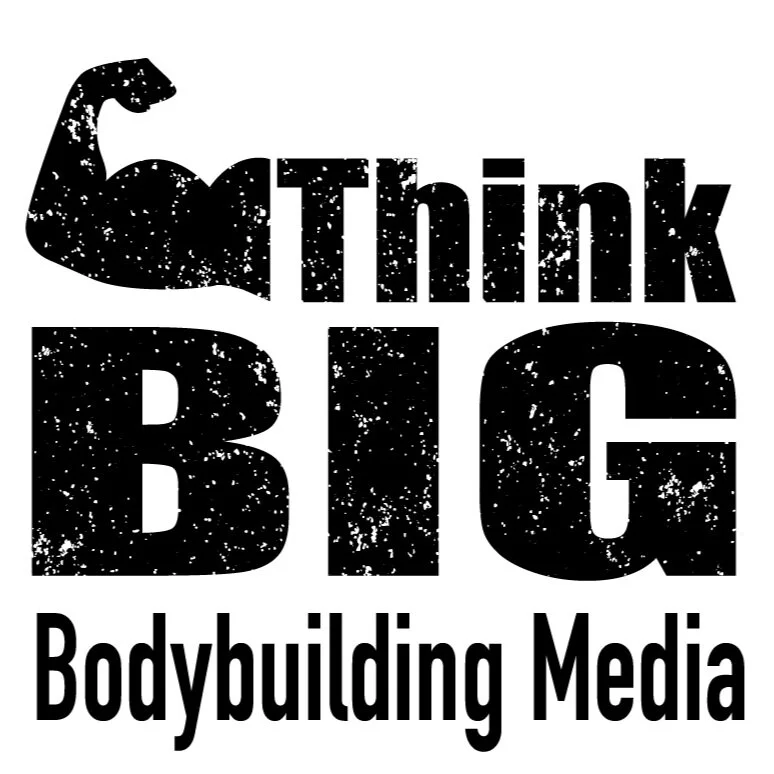Women & Steroids:
Ignorance & the Enigma of Anabolics for Her.
Lately I've found myself disgusted with the sheer amount of overly simplistic and dangerous discussions of female anabolic-androgen steroid (AAS) use. By no means is this an easy area to unpack. Quite frankly, it's an enigma, and in order to host a responsible conversation requires a lot more than just reciting 'scientific data' like it's gospel.
To begin to understand this massively intricate topic takes challenging certain personal beliefs like biological difference between the sexes, typical “masculine” or “feminine” characteristics, and knowledge about the body itself. It involves understanding physiology, biomedicine, the endocrine system, hormones, and of course androgens specifically, while not forgetting to mix in ‘personalized medicine’ – a method emphasizing evaluation and programming based on the individual and their uniquely dynamic characteristics. It demands a grasp of the physical and chemical properties of AAS, and basic clinical pharmacology of the effects of specific compounds is also essential.
Most critical of all, there needs to be context. Who exactly are we talking about? What other health and performance variables must be considered? What additional factors - whether internal or external to that particular individual's body must be explored? What drugs were used, for how long, and what source are they from? In this conversation, context is everything.
As an academic researcher I am writing this not as scare tactic. In fact, I’m very critical of, and often appalled by, pseudo-scientific, unethical, and propaganda-like scholarly publications preaching the ‘evils’ of steroid use without citing relevant studies to back such claims. Nothing irks me more than reading information, hearing conversations, and seeing firsthand the damaging results of uneducated and ill-informed bro-pharmacists. I recognize fully the dangerous influence of Dr. Juice – the contest prep cocktail isn’t just a concern for females but all AAS users, but to say it simply – the body is complicated.
Often I see athletes getting so focused on the ‘outside’, that what is happening on the inside gets ignored. At the crux of most sport is the desire to perform, and not just 'good enough' but to excel. To take your body to a new limit - whether it's an achievement of strength, speed or physical appearance. It's ok to want to win. It's ok to push the limits. But we have to start appreciating that by doing so, we alter and modified how well our internal systems can function. No matter how much 'science' or 'evidence' is involved during the process, many times the extent of this is unbeknownst until it's too late.
Fem chem.
While AAS are a class of drugs often containing synthetic testosterone, we all have this steroidal hormone flowing naturally in our bodies. Of course there are large variations in natural (endogenous) levels of testosterone. Since we are talking about women, I want to mention a hugely important point – whether genetic or due to other causes, some females have high levels of androgens. Indeed, androgen excess is the most common endocrine disorder in women of reproductive age.
Women naturally produce sex steroids in various parts of their body – primarily the adrenal glands and ovaries. Other tissues such as fat and skin can also assist in converting weak androgens to stronger ones. Furthermore, some women with excess androgens may have excess levels of circulating insulin (insulin resistance), which has a massive effect on metabolic function, and can manifest in a wide range of symptoms including weight gain and lethargy. High androgens are also a common marker for an endocrine disorder called 'Polycystic Ovarian Syndrome' (PCOS) (as I've discussed before, this is a misunderstanding panacea). While it may come with a list of sub-characteristics and manifestations, little is known about 'PCOS' in “fit” women. Currently there is a limited study exploring how AAS may interact with 'PCOS', metabolic function, or influence the body’s ability to create and use androgens naturally.
Why am I spewing this medical mumbo jumbo? All of this is hugely important to remember when discussing women and steroids for a number of reasons including the fact for whatever reason people seem to think the female body lacks any amount of androgens to begin with. Furthermore, there appears to be a lack of regard for the variance in natural levels of androgens, and the different ways in which women can metabolize these steroids. I told you, it's complicated. But guess what? All of this gets even more complex when you add in our abysmal knowledge of athlete steroid use in general.
Bro Knowledge
For over 50 years AAS have been a cluster of controversy and panic, which unfortunately has limited academically sound and clinically applicable information on these drugs. The studies that do get discussed within the industry often pertain to the use of AAS within medical populations, or are concerned with self-administration by males – neither can be translated for female use! So where do you go then to learn about women and steroids? Internet forums of course! And if that doesn’t work, hire a prep coach. If those thoughts crossed your mind, even for a second, please give yourself a very hard smack, as that assumption couldn’t be more wrong and dangerous.
Let's break a few things down –
Your prep coach is not a researcher and Internet forums are not medical textbooks. Many times the information isn’t even on the specific compound you are looking to better understand because (surprise) anabolic steroids are sold on the BLACK MARKET. They are unregulated and not controlled for purity or strength. Thus, there is a high chance they have been cross-contaminated. Please note that a little sticker saying “pharmaceutical grade” means absolutely nothing. For men this is important, but for women it is absolutely crucial. Although health risks exist with any AAS, there are certain properties associated with specific compounds that may pose less of a risk for some women (please note the absolute lack of any generalizing statement within this comment).
The effects of female hormone manipulation are murky. Even if you determine a particular steroid is acceptable for personal use, you’ll be lucky to get your hands on a bottle actually containing the desired drug. And this matters! You should know what you are taking as all AAS are not the same!
Different AAS elicit different anabolic and androgen responses- anabolic induced changes to rates of muscle growth AND androgenic responses such as acne, hirsutism (abnormal hair growth), and reproductive dysfunction. These vary from drug to drug, and are often described in the form of a ratio. For example, synthetic testosterone has an anabolic to androgenic ratio of 1:1. This is the one and only time you’ll read a specific compound name in this article. Why? There’s a sickening sense of “protection” associated with specific drugs due to this ratio. An assumed safety net has been cast over certain drugs deemed “ok” for female consumption simply because they have lower androgenic activity. This notion is not only irresponsible and foolish, but it’s created a lack of critical thinking and laziness around female anabolic use. It amazes me that someone will prep for months BUT won’t put in the time and effort to truly understand the drugs they are putting into their body, and the influence on their health. While there’s little assistance from medical sciences on anabolic steroids, education is not impossible.
I'm not getting off my soap-box yet. Please know, I’m all for personal choice. I completely respect an individual’s decision to build their body as they please, but regarding AAS, there is a responsibility to fully understand risks, rewards, and long-term consequences of usage. Who you are today may not reflect who you want to be tomorrow. While you may want to be the next Ms. Olympia, life changes - your health changes. If you really want to learn more about steroids for the female users start with the basics. Understand basic human physiology. Work with a health care practitioner to track your sex hormones and menstruation patterns, and know the interaction of these on the endocrine system. There is some work out there on women and steroid use - however, there is a lot of room for improvement... variables not controlled for or even mentioned, problematic methodologies, and just all around bad science.
Ignorance & bad science
So no, women and steroids is not a topic that you can simply search on the Internet or ask a random bro about. As I mentioned above, unfortunately it's also one that recently some of the industry's "most educated" have completely dropped the ball on - spewing off preconceived notions and unsubstantiated information without any critical reflection of the impact that their words have on the health of others.
To be honest, I get sick to my stomach when I think about the far reaching consequences of the conversations happening on social media about women and steroid use. I'm not just talking about female AAS use either, but steroids and other pharmaceuticals used in hormone manipulation in all forms: androgens, peptides, selective androgen receptor modulators (SARMs), anti-estrogens, oral contraceptives, hormonal IUDs, hormone replacement therapies - oral, injectable, implants, patches, creams, sprays, and powders.
Do I know everything there is to know about female hormone manipulation? Hell no. By no means do I see myself as an authority on this topic. Even with my doctoral research being on women and steroids - the use of AAS and oral contraceptives by female athletes, and all the time I have spent specializing in this area and working directly with female athletes, doctors and other professionals, I am no expert.
Guess what? When it comes to women and steroids, I'm not afraid to admit that there is a lot that I don't know. Now that I've probably lost the confidence of a few by admitting this, I'll tell you something that I do know about this topic: I don't know because we don't know. We don't know because there is a complete lack of study, critical conversation and personal dialogue - not only as it relates to female hormone manipulation, but women's health issues as a whole. Especially, information from a female perspective, which when it comes to these topics isn't important - it's essential.
As a result, it's vital to get good, reputable and contextual information out there. It's crucial to host conversations about women and steroids openly and without bias. But, there is a warning that should come with doing this -
Words have power.
When you have power, words become the divine.
Be careful what you put out to the world because the publication of inaccurate or misleading data is no different than the ignorance you seek to destroy. Ignorance is not bliss - it is dangerous. Ignorance disguised as scientific knowledge has infinite power. It is an incurable disease that spreads like wildfire, and puts the health and safety of women in serious danger.
It's time to start respecting that anabolics for her is an enigma. You are not an expert on this topic because no one is an expert. Maybe once you do that, we can actually start helping women.
Ps. I am working relentlessly to be able to start sharing more of my research on women and steroids with you. After the recent events online, it's clear that right now - more than ever it's needed.









